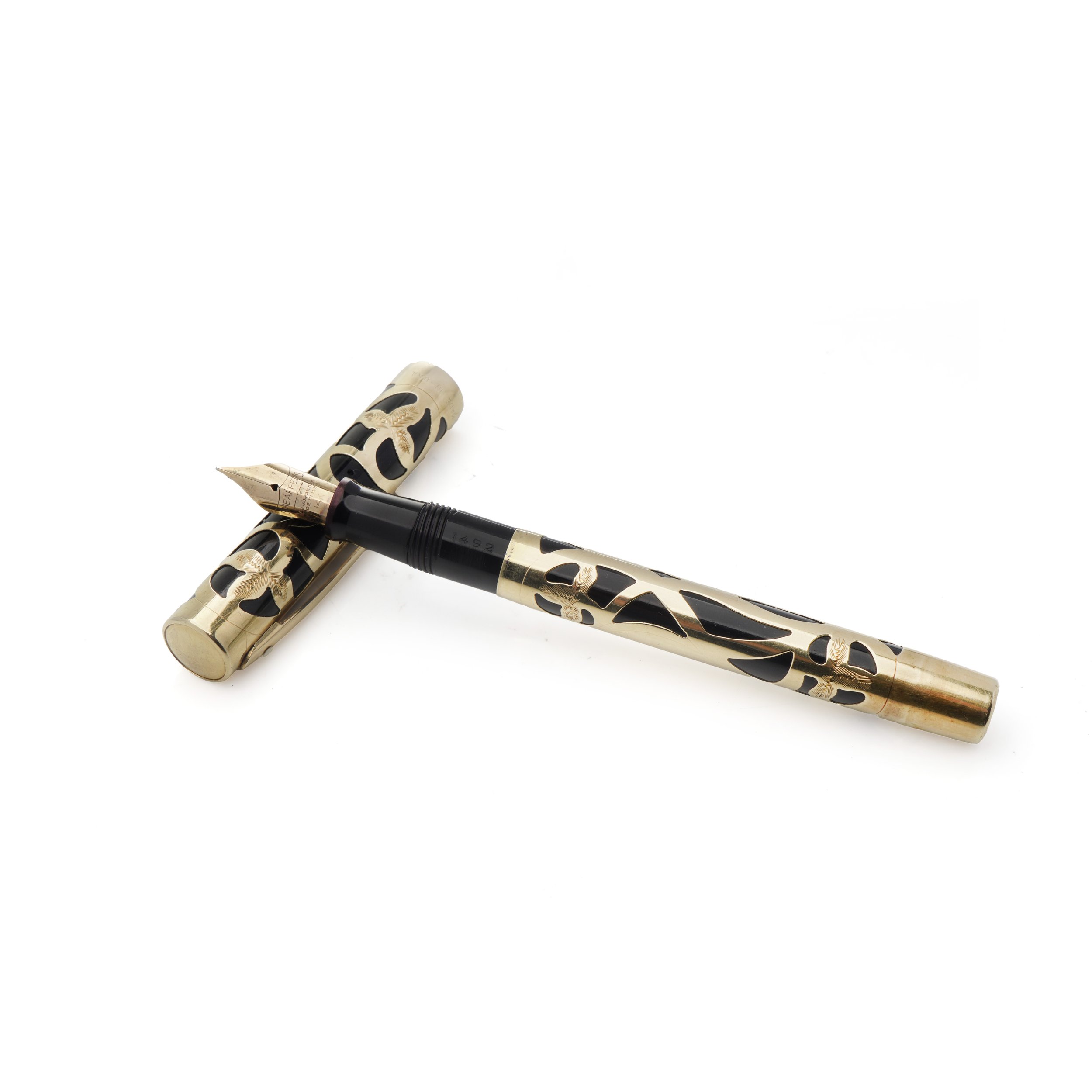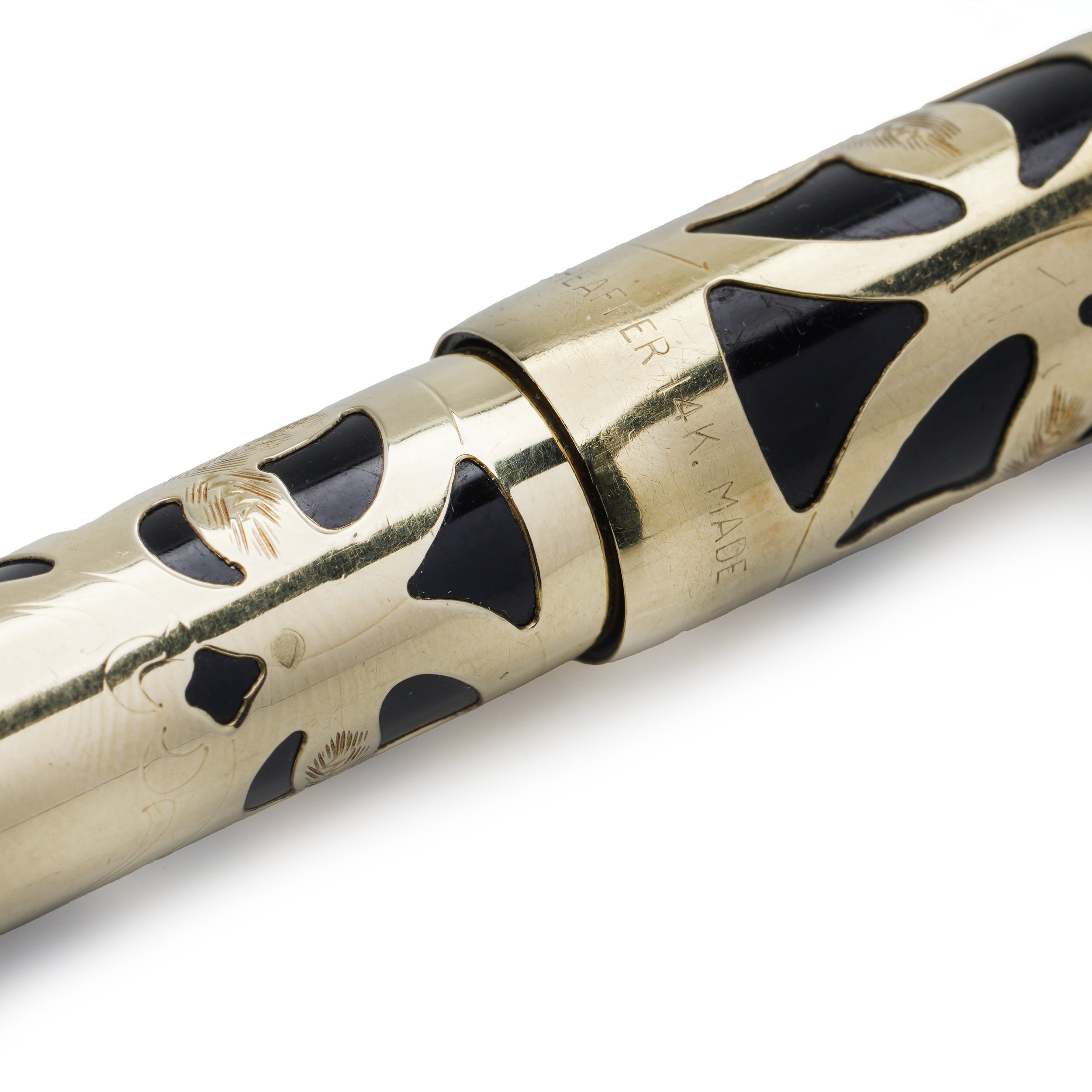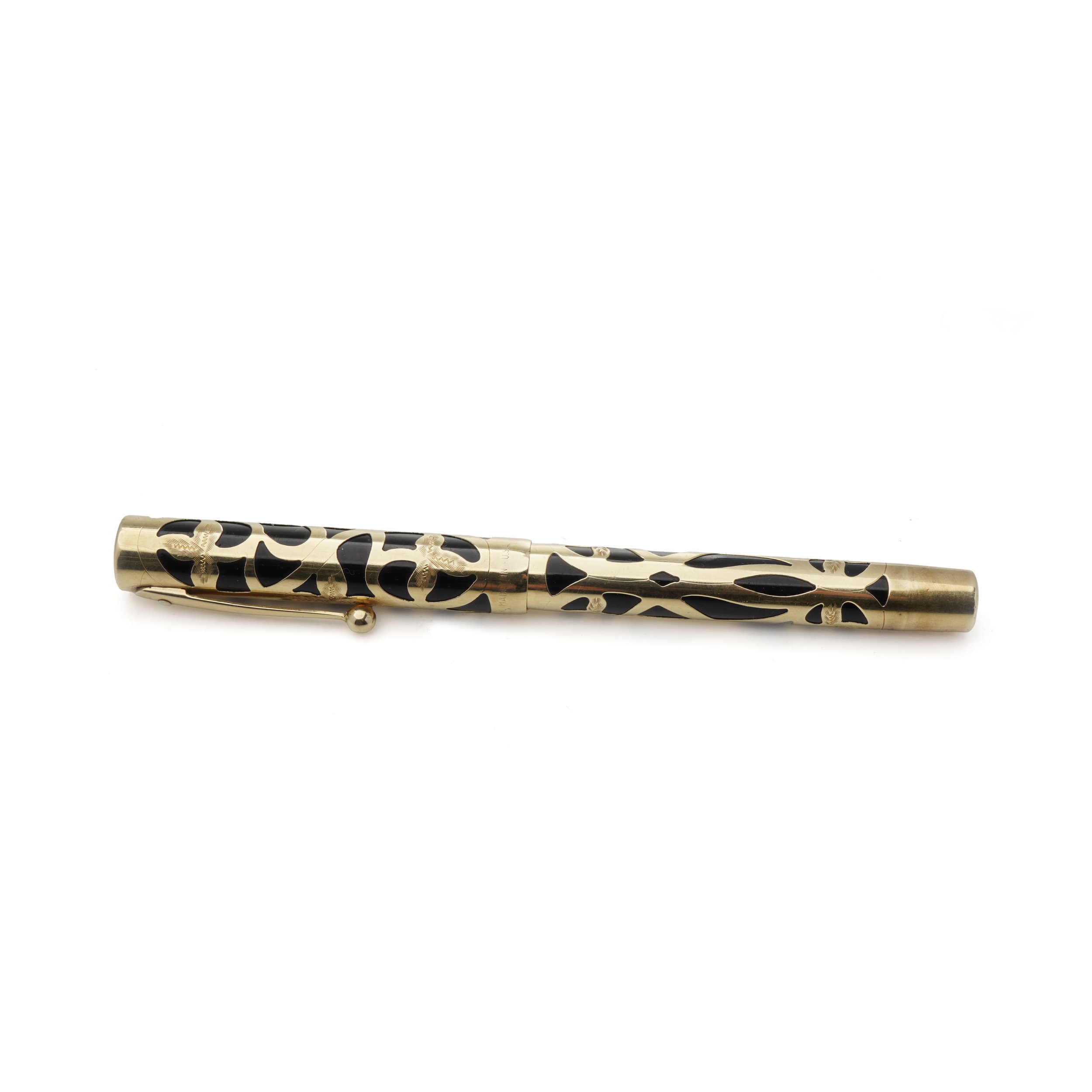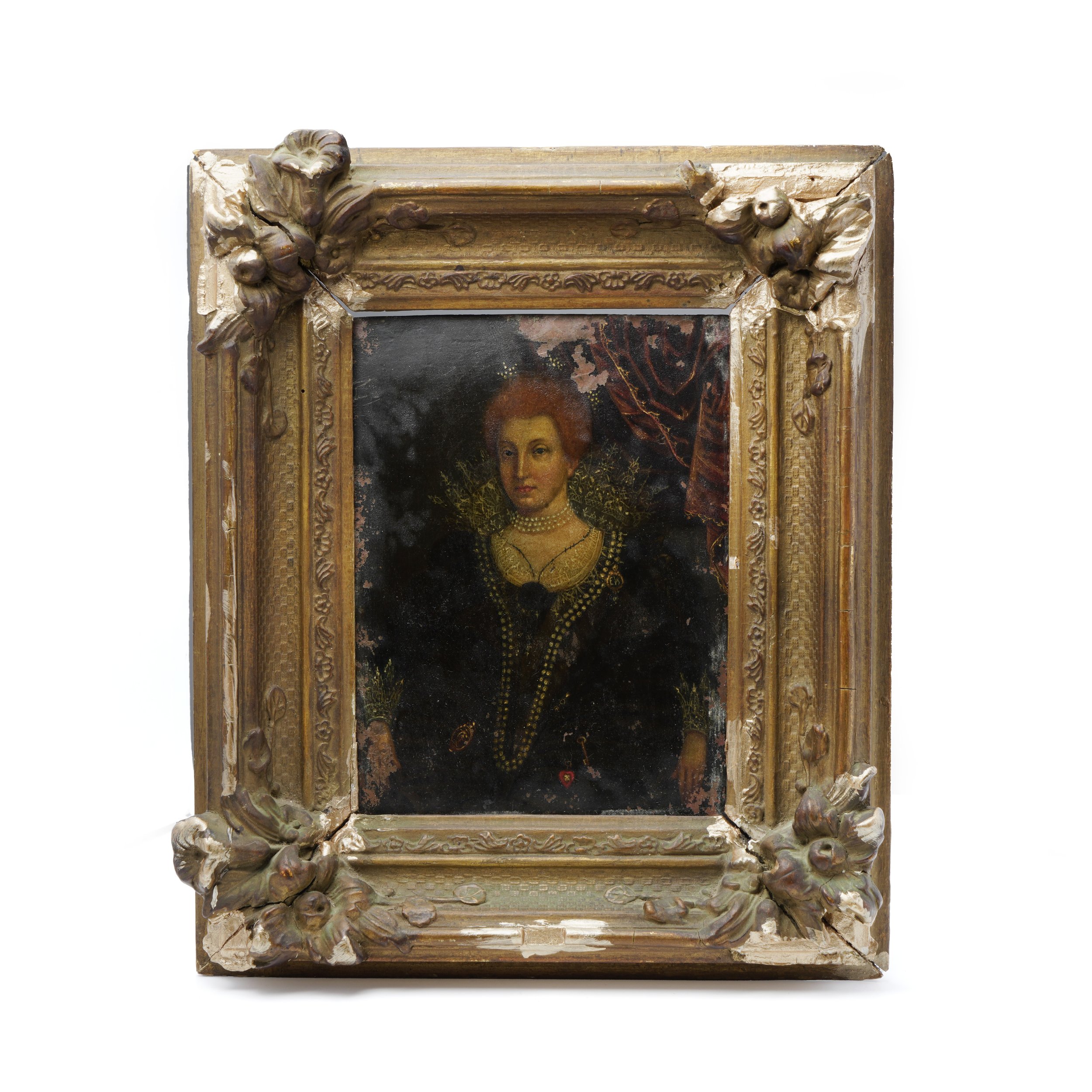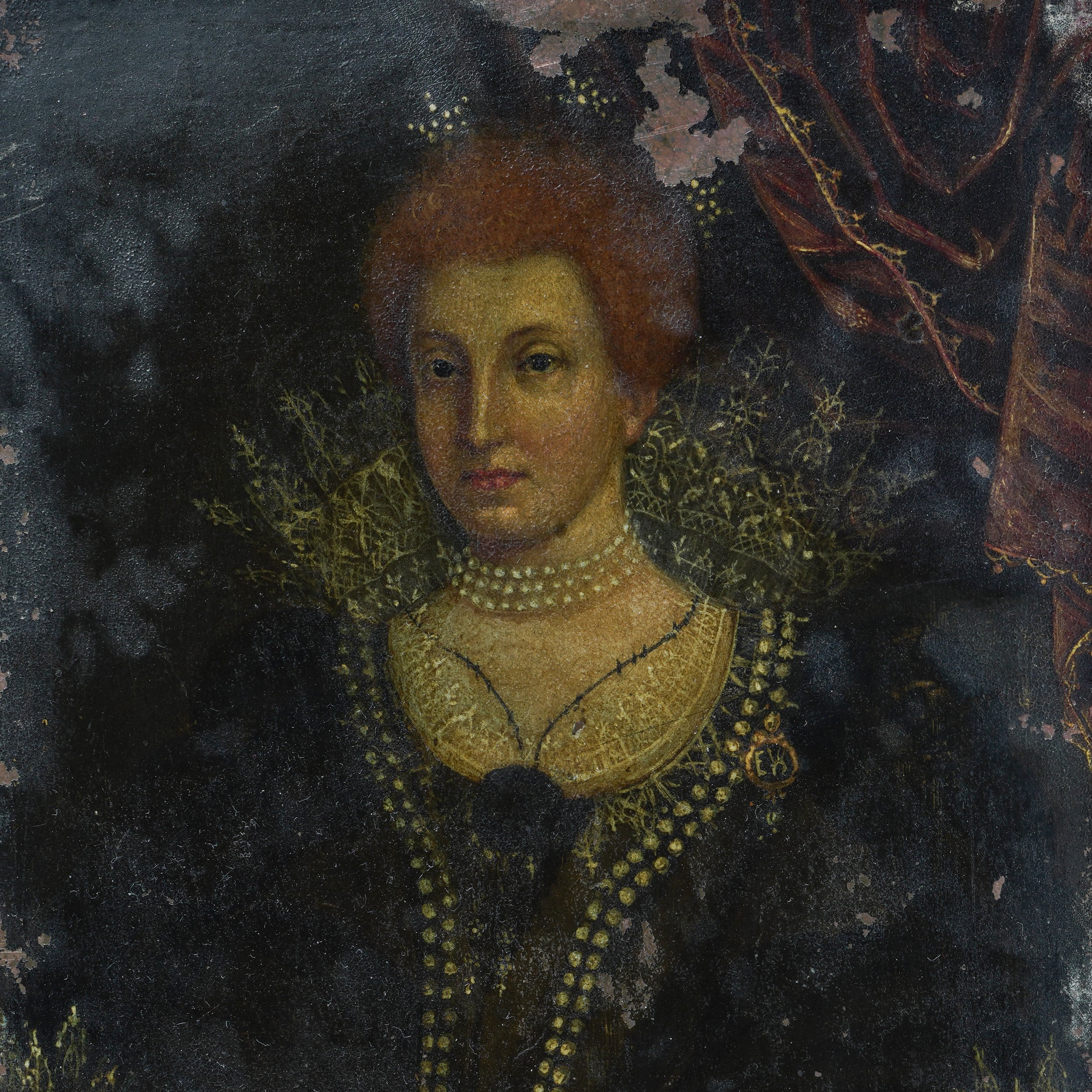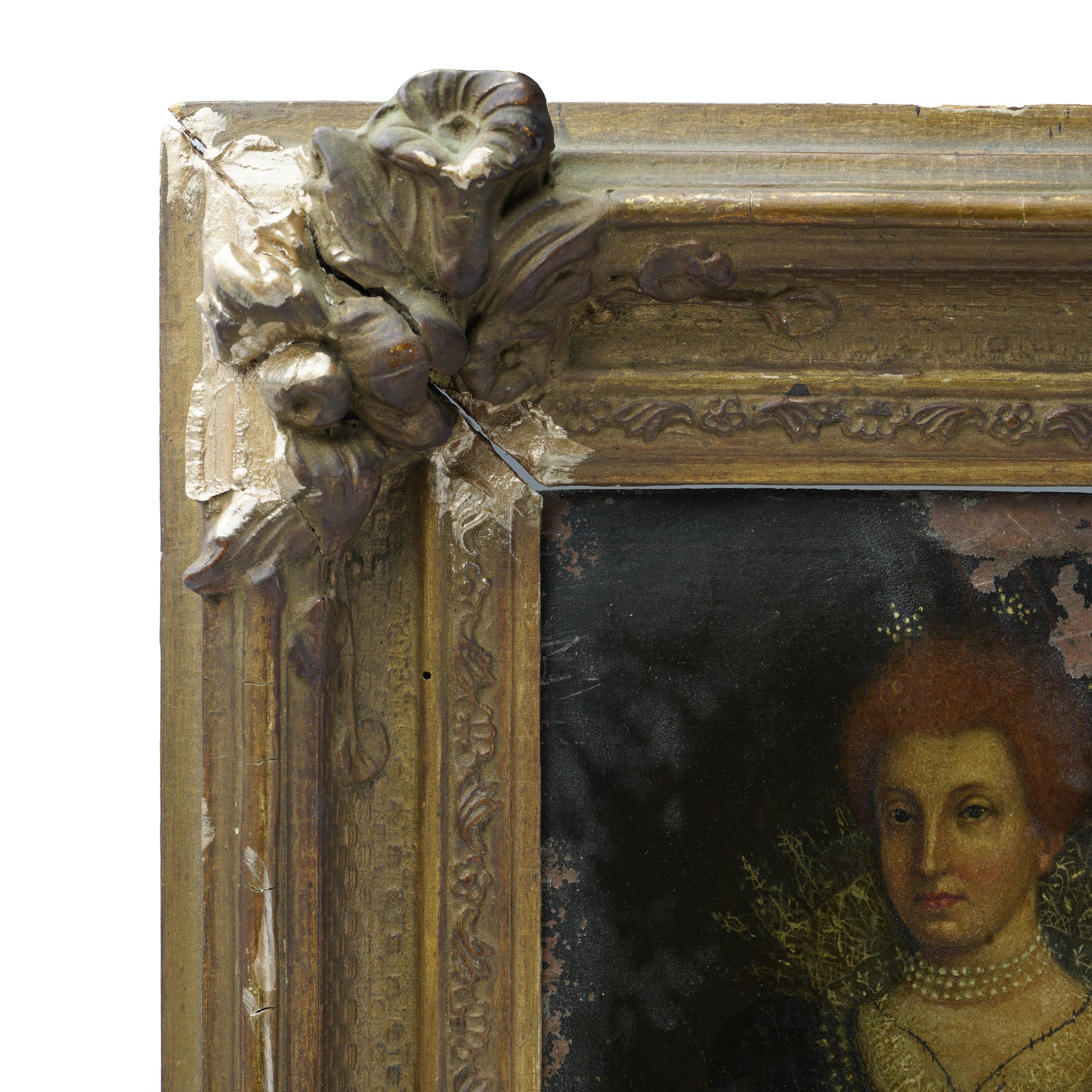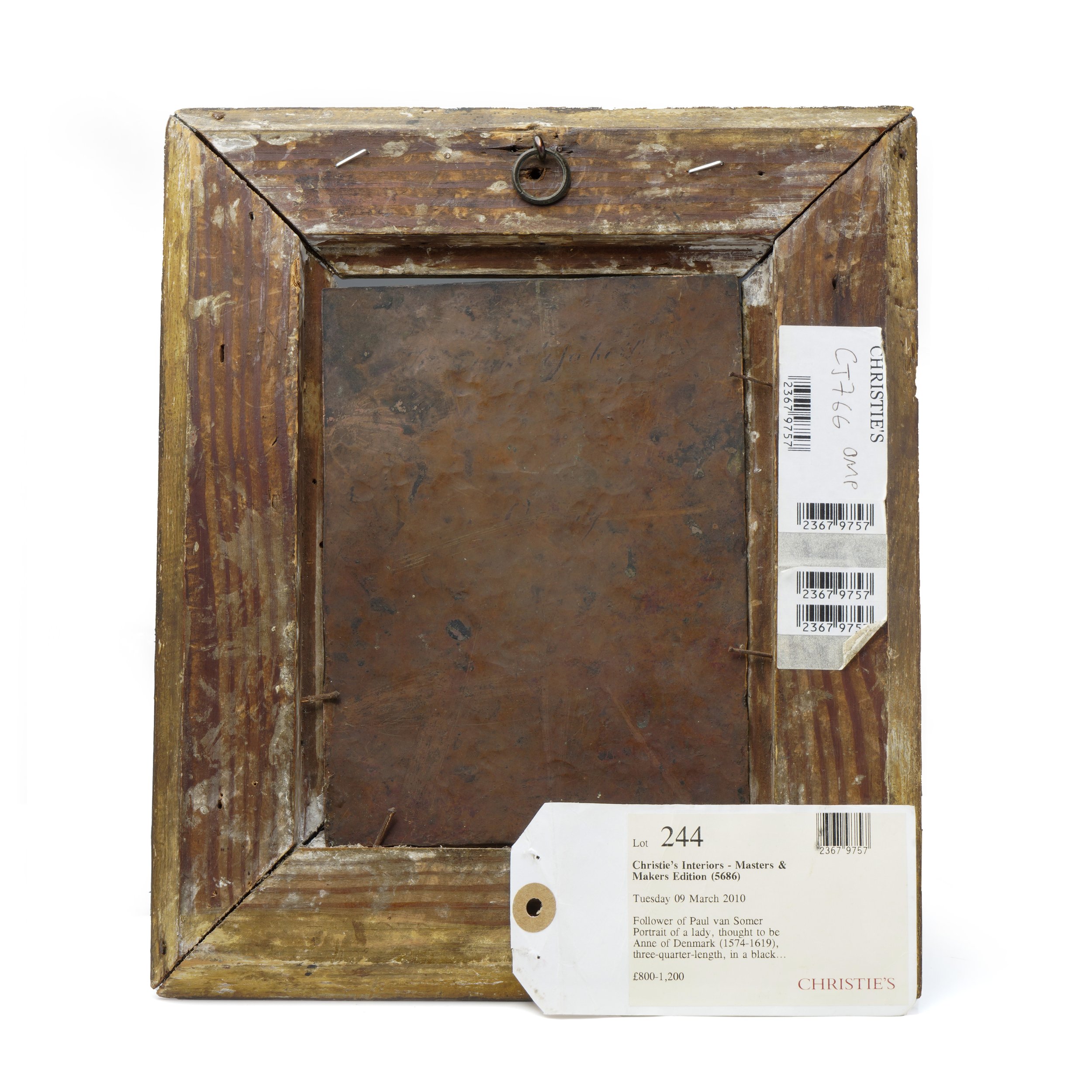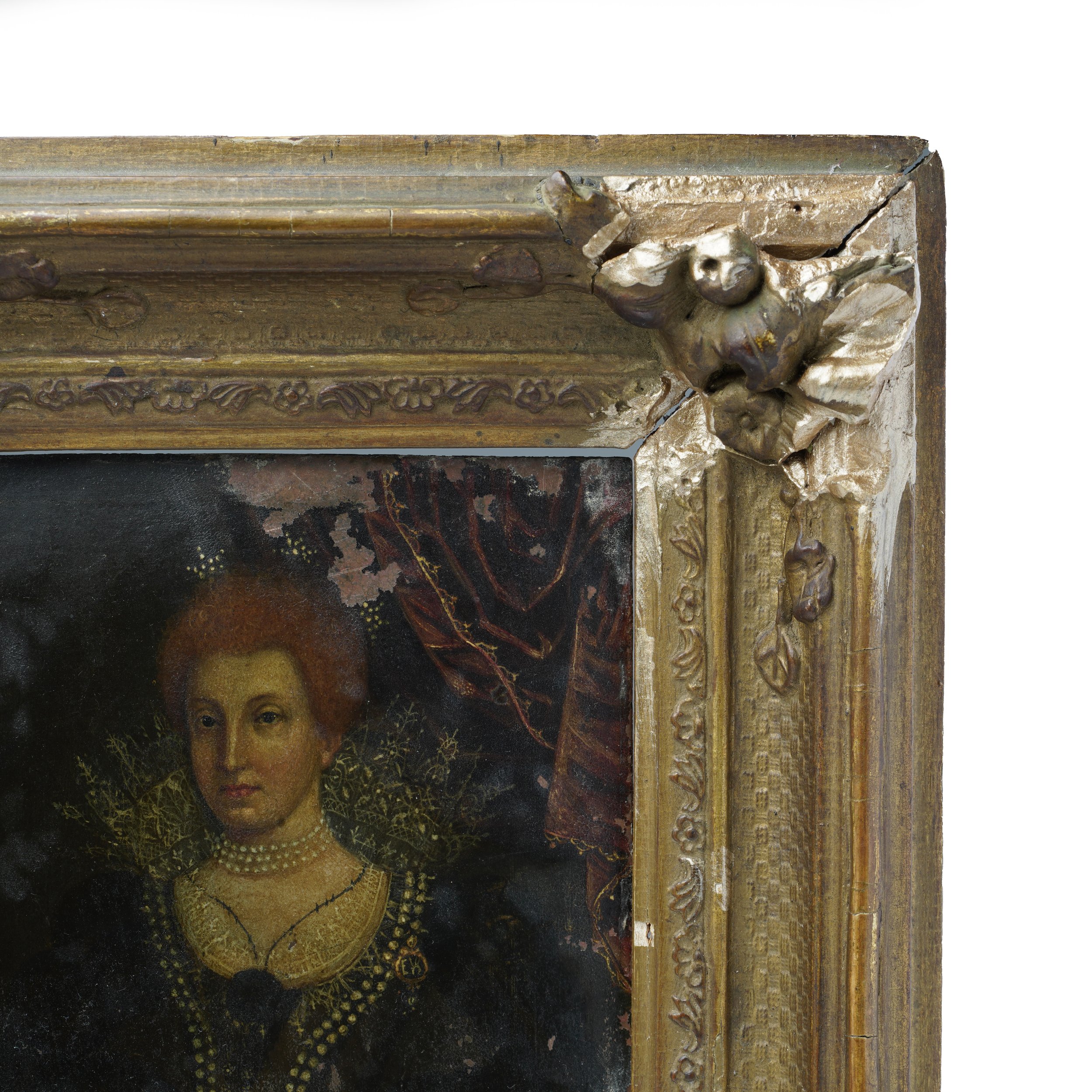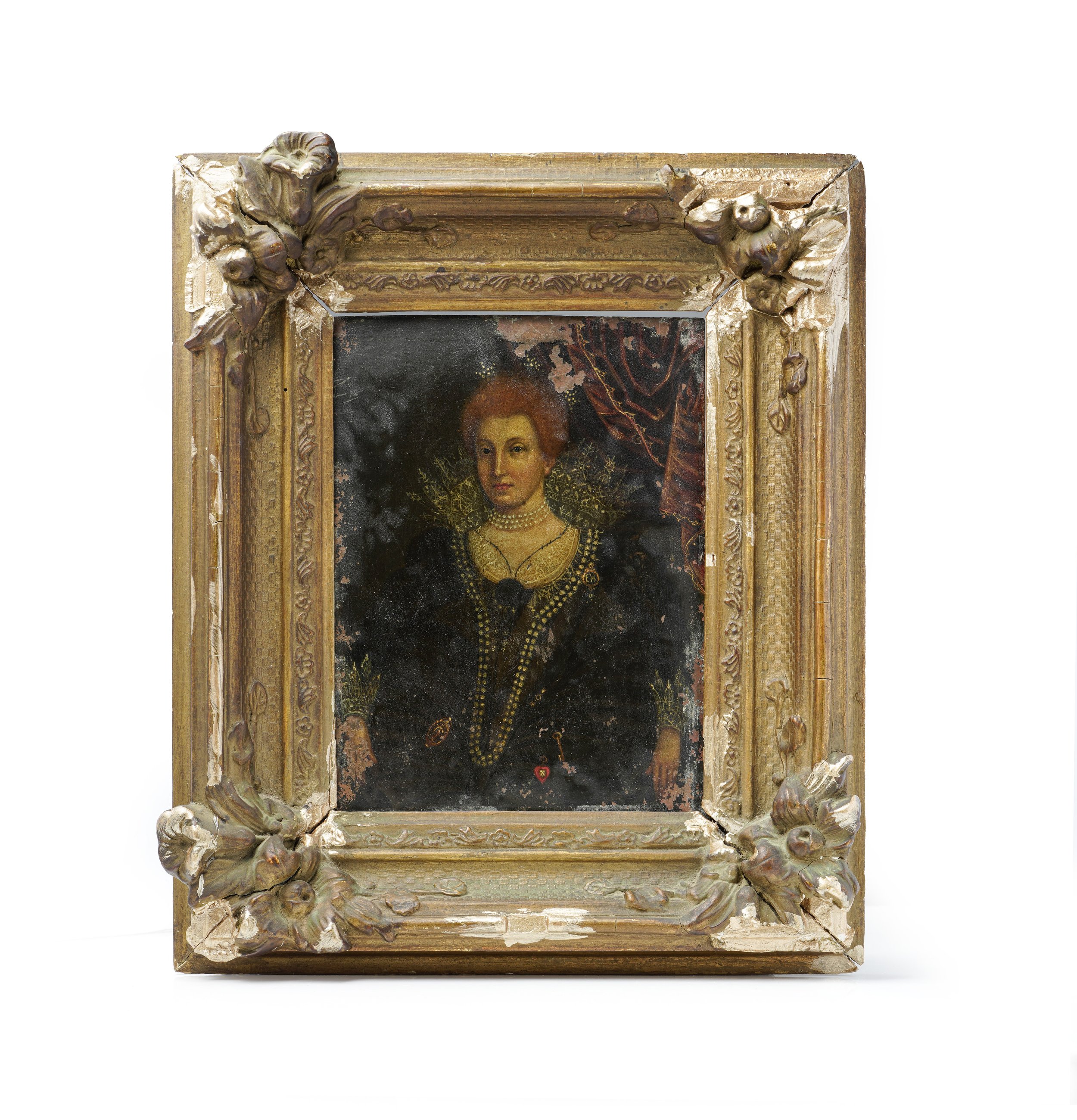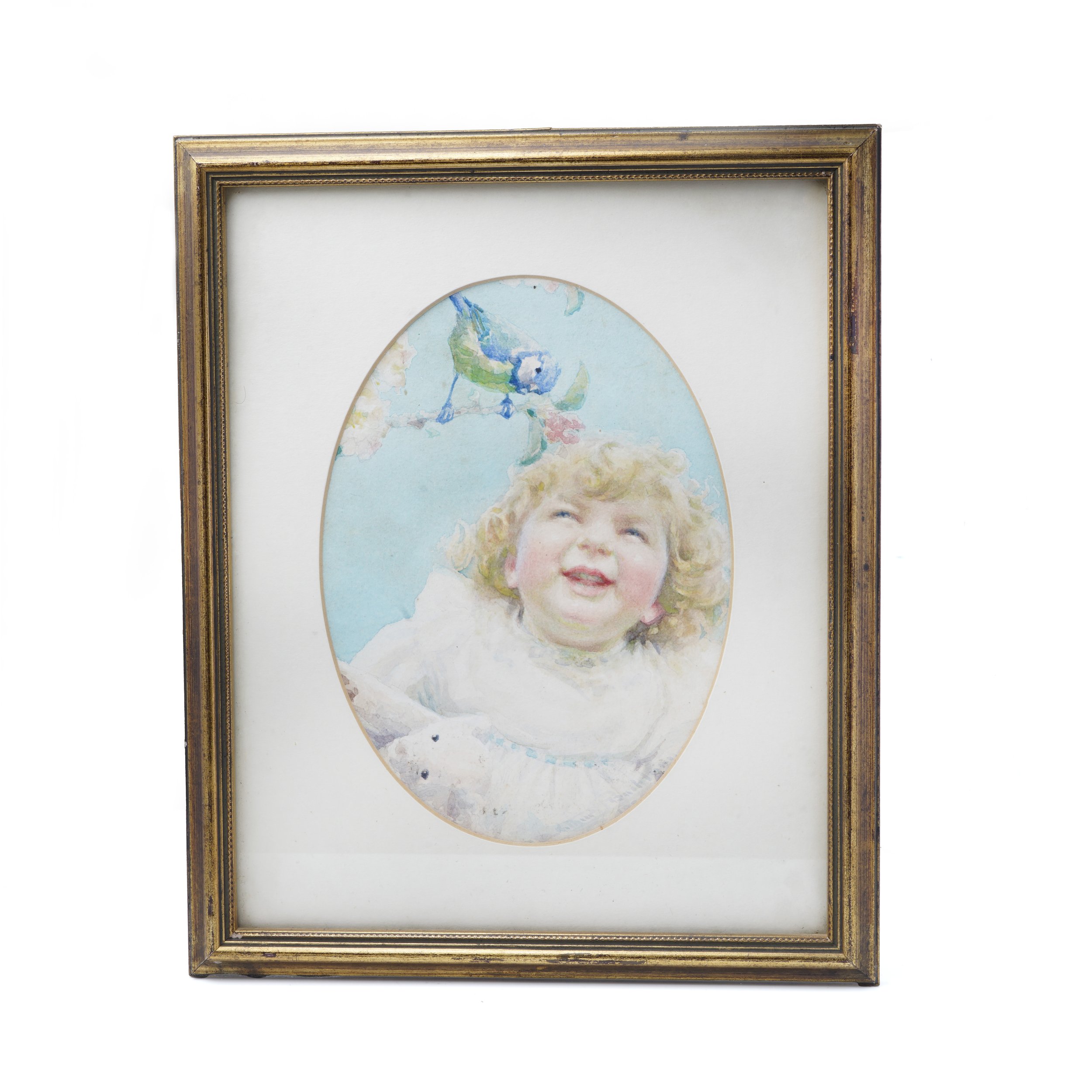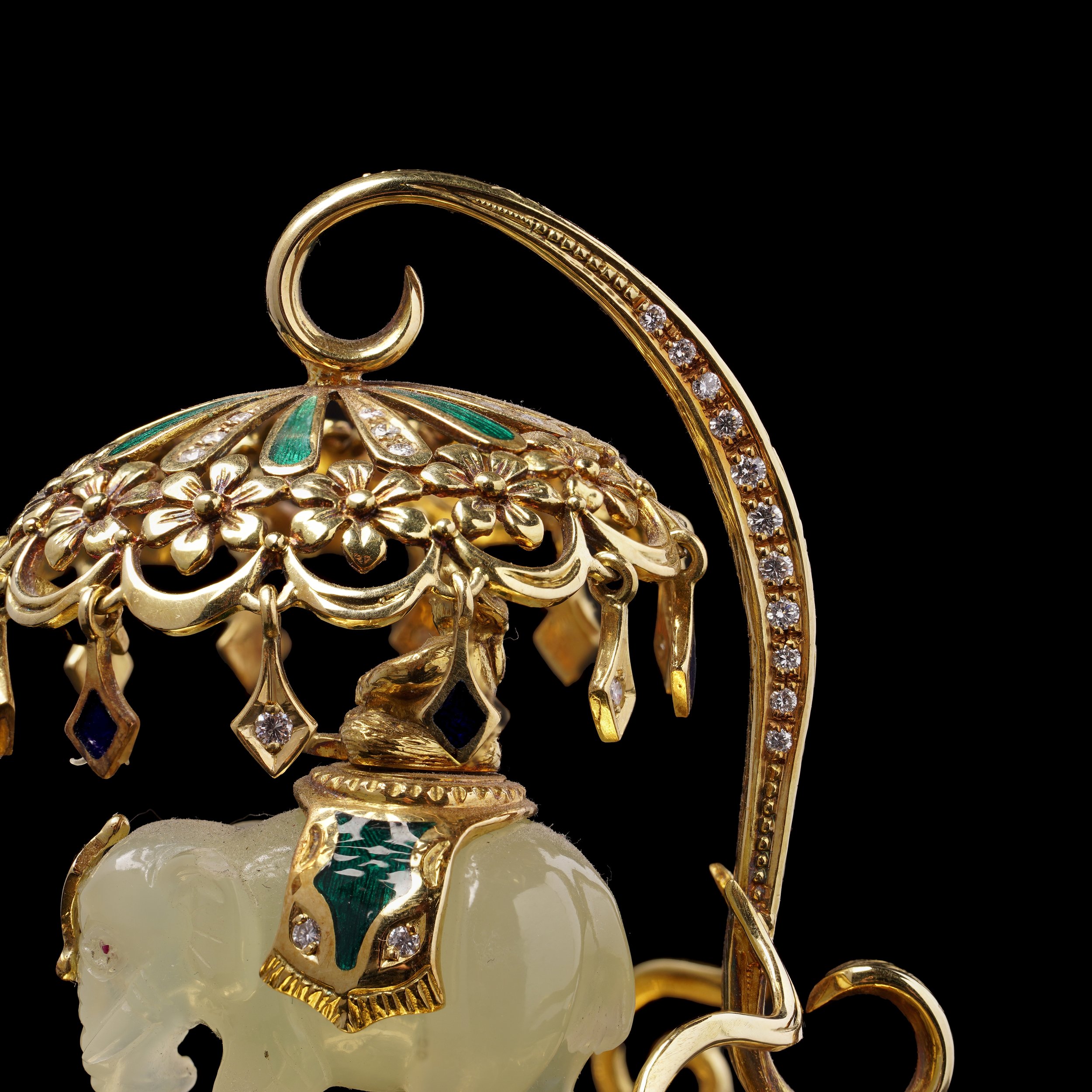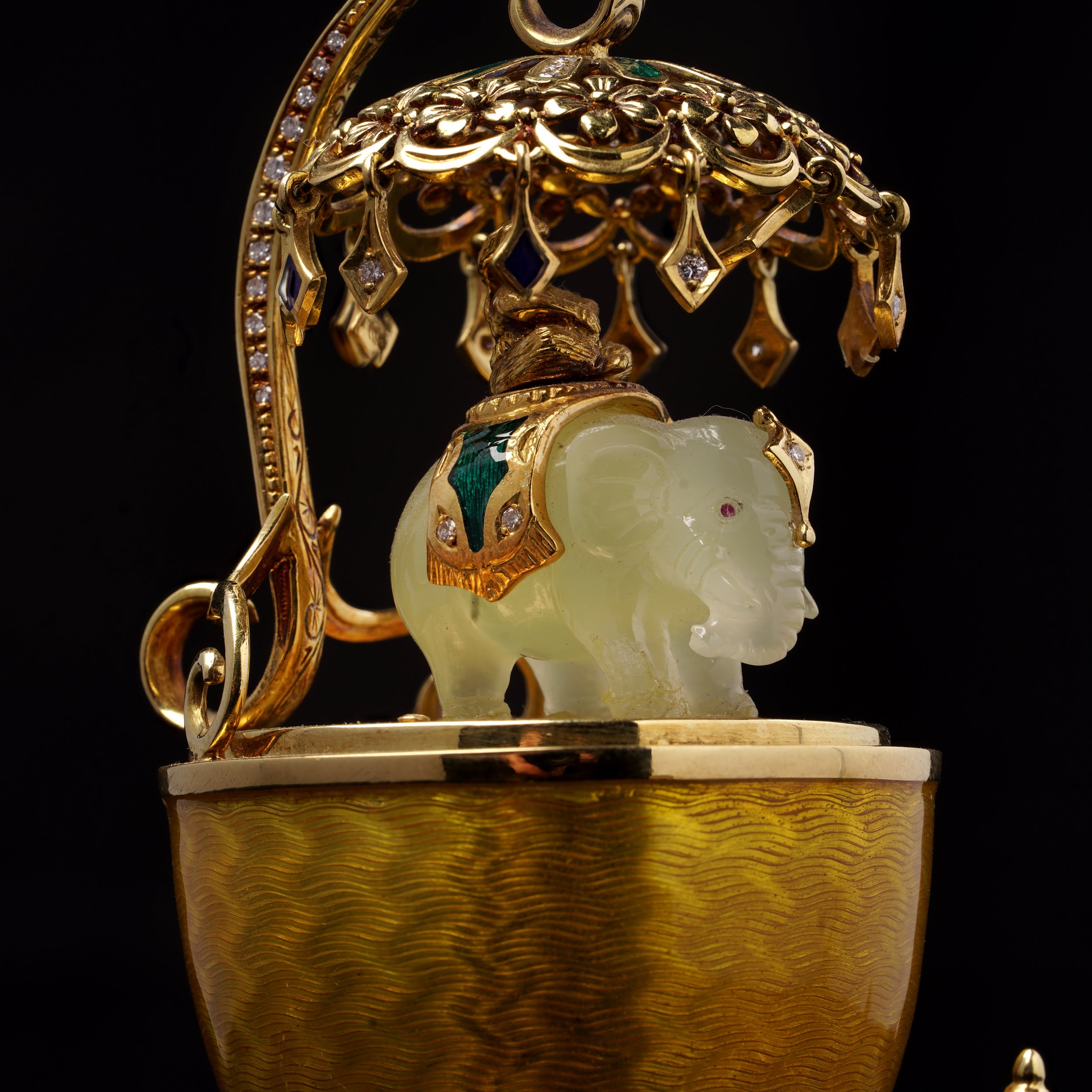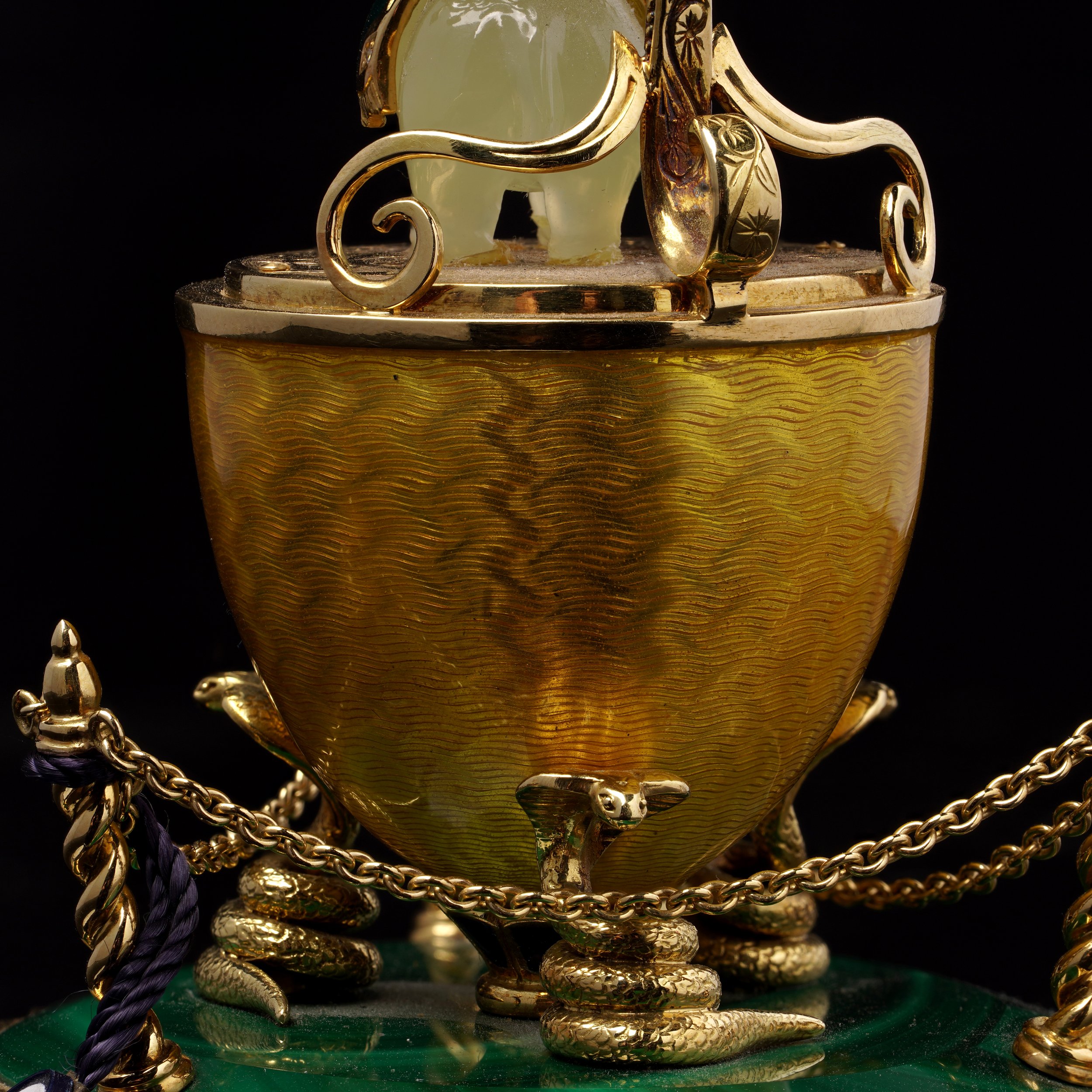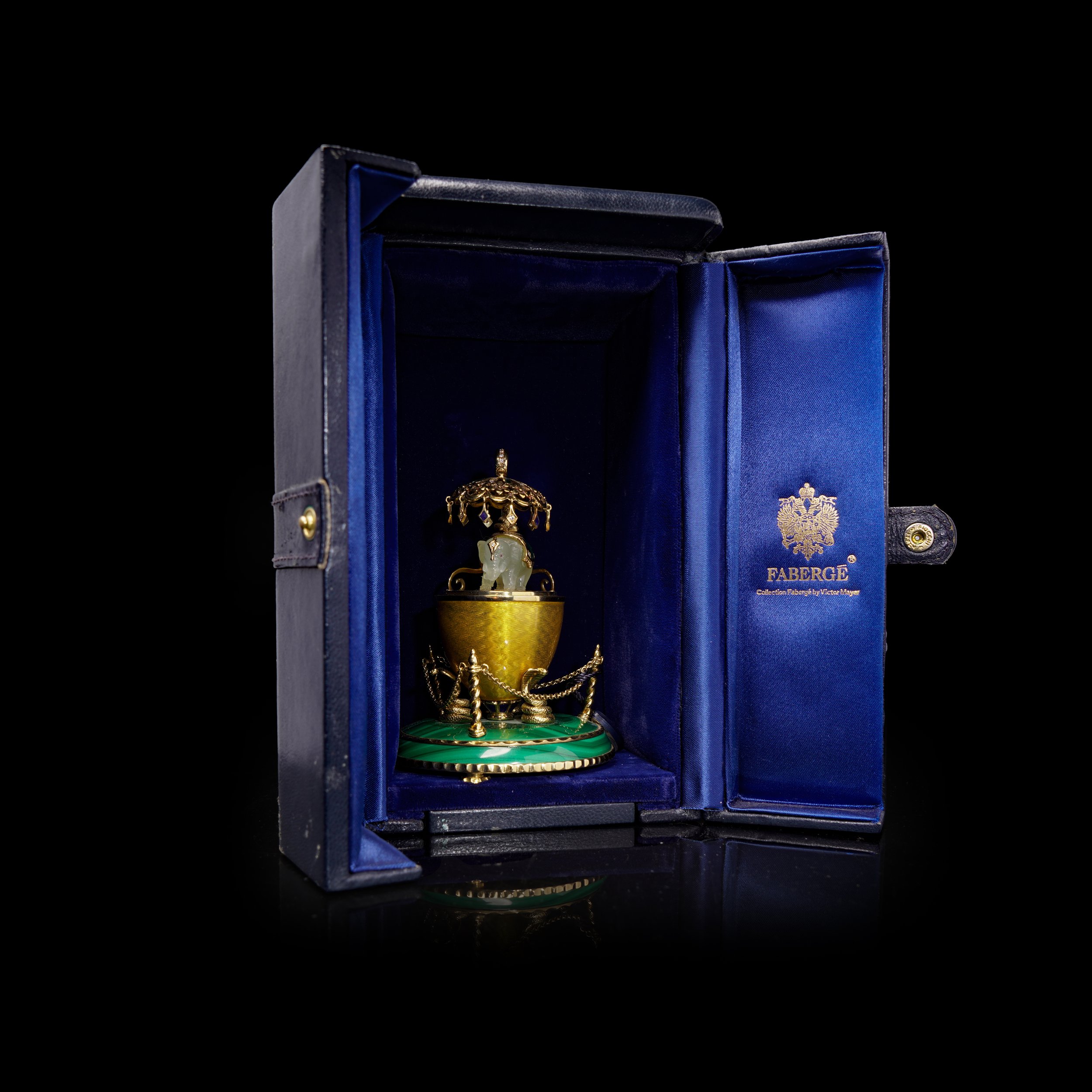Welsh school Portrait of the two children of Mr and Mrs Oliver Jones
Welsh School, Portrait of the two children of Mr and Mrs Oliver Jones, full-length, one wearing blue, the other red, holding a bow and a spear.
Oil on canvas
Unframed: 126.2 x 102 cm
Framed: 130.5 x 107.4 cm
Approximate weight: 5KG
Provenance
Probably by descent in the Jones family, Fonmon Castle, Glamorgan;
Thence by descent in the Boothby family at Fonmon Castle, Glamorgan, to the present owner.
Condition: Painting is pre-owned, painting has age-related natural crackling, minor signs of usage, please see pictures, there area few blemishes shown in pictures, otherwise good condition overall.
Castle history:
The first named owner of the land that Fonmon stands on was Llewellyn ap Myryg. The keep, which exists today, and defensive ditches were built by the St Johns in 1180. It was originally built to keep people out; however, it seems to have quickly become an admin centre, then a hunting lodge.
In 1290 Sir William St John II was named as ‘lord of Funnemunne’. He enclosed the Keep within a curtain wall, forming a four-sided court. Part of the wall survives as the tallest wall of the Great Hall. Four square towers were added. At this point Fonmon looked like a child’s drawing of a castle.
In the fifteenth century, John de St John IV of Fonmon served Richard II and the Lancastrian kings. He was made Sheriff of Glamorgan and Steward of Gower. He commanded Neath Castle against Owain Glyn Dŵr. Towards the end of the century, the St John family moved to Bletsloe, never to return. Administration continued from Fonmon for the next 200 years and it was rented to minor members of the family until the estate was put up for sale in 1656. It was used as a mustering point before the Battle of St Fagan’s in the English Civil War.
Colonel Philip Jones, the richest man in Wales bought Fonmon, Llancadle and Penmark in 1658 after 2 years of negotiation, for £11,083 1s. 4d. He began a phase of building, turning the castle from a farm into a grand home.
The preachers Charles and John Wesley were frequent visitors to Fonmon. The widow of Robert Jones II was very religious, and both Wesleys became friends of the family and preached here, often crossing the channel from Devon to do so.
Robert Jones III inherited the castle from his mother in the 1730s and spent a great deal of money on turning it into a party palace. People came from far and wide to celebrate at Fonmon, to see and be seen. He was responsible for the Rococo decorations, grand staircase, and open-plan Great Hall. He eventually fled to France to escape his debtors.
His son, Robert Jones VI rather neglected Fonmon. It passed down through generations of the family. Oliver Thomas Jones rose to a high rank in both the Army and the Navy, which is quite unusual. One of the men of the family was caught up in the French revolution. Another lost a leg in battle. Robert Oliver Jones, a successful magistrate, eventually inherited the castle and brought Fonmon back into a decent state.
The last phases of building happened in Victorian times. The bar area of the tearoom was added as was the front porch and grand front door.
When the heir to the castle was killed in The Great War, it passed into the Visby then the Boothby families. Lady Anne and Sir Hugo passed the castle on to their son, Sir Brooke Boothby who brought up his family here. The Vale Show was based at Fonmon, and it was a successful wedding venue.
In 2019 the castle was sold to Nigel Ford. He fixed the leaks, installed a biofuel boiler and made sure that the structure was sound. He lives here three days a week.
It became a visitor attraction and events venue in 2019 and is opening for weddings and evening events again in 2024.
ITEM LOCATION : United Kingdom
SHIPPING FEE: Complimentary Express & Insured Shipping
INCLUDED: Complimentary Gift Wrap Packaging & Certificate of Evaluation.
RETURNS: 14-Days Return Policy, Money-Back Guarantee.
Welsh School, Portrait of the two children of Mr and Mrs Oliver Jones, full-length, one wearing blue, the other red, holding a bow and a spear.
Oil on canvas
Unframed: 126.2 x 102 cm
Framed: 130.5 x 107.4 cm
Approximate weight: 5KG
Provenance
Probably by descent in the Jones family, Fonmon Castle, Glamorgan;
Thence by descent in the Boothby family at Fonmon Castle, Glamorgan, to the present owner.
Condition: Painting is pre-owned, painting has age-related natural crackling, minor signs of usage, please see pictures, there area few blemishes shown in pictures, otherwise good condition overall.
Castle history:
The first named owner of the land that Fonmon stands on was Llewellyn ap Myryg. The keep, which exists today, and defensive ditches were built by the St Johns in 1180. It was originally built to keep people out; however, it seems to have quickly become an admin centre, then a hunting lodge.
In 1290 Sir William St John II was named as ‘lord of Funnemunne’. He enclosed the Keep within a curtain wall, forming a four-sided court. Part of the wall survives as the tallest wall of the Great Hall. Four square towers were added. At this point Fonmon looked like a child’s drawing of a castle.
In the fifteenth century, John de St John IV of Fonmon served Richard II and the Lancastrian kings. He was made Sheriff of Glamorgan and Steward of Gower. He commanded Neath Castle against Owain Glyn Dŵr. Towards the end of the century, the St John family moved to Bletsloe, never to return. Administration continued from Fonmon for the next 200 years and it was rented to minor members of the family until the estate was put up for sale in 1656. It was used as a mustering point before the Battle of St Fagan’s in the English Civil War.
Colonel Philip Jones, the richest man in Wales bought Fonmon, Llancadle and Penmark in 1658 after 2 years of negotiation, for £11,083 1s. 4d. He began a phase of building, turning the castle from a farm into a grand home.
The preachers Charles and John Wesley were frequent visitors to Fonmon. The widow of Robert Jones II was very religious, and both Wesleys became friends of the family and preached here, often crossing the channel from Devon to do so.
Robert Jones III inherited the castle from his mother in the 1730s and spent a great deal of money on turning it into a party palace. People came from far and wide to celebrate at Fonmon, to see and be seen. He was responsible for the Rococo decorations, grand staircase, and open-plan Great Hall. He eventually fled to France to escape his debtors.
His son, Robert Jones VI rather neglected Fonmon. It passed down through generations of the family. Oliver Thomas Jones rose to a high rank in both the Army and the Navy, which is quite unusual. One of the men of the family was caught up in the French revolution. Another lost a leg in battle. Robert Oliver Jones, a successful magistrate, eventually inherited the castle and brought Fonmon back into a decent state.
The last phases of building happened in Victorian times. The bar area of the tearoom was added as was the front porch and grand front door.
When the heir to the castle was killed in The Great War, it passed into the Visby then the Boothby families. Lady Anne and Sir Hugo passed the castle on to their son, Sir Brooke Boothby who brought up his family here. The Vale Show was based at Fonmon, and it was a successful wedding venue.
In 2019 the castle was sold to Nigel Ford. He fixed the leaks, installed a biofuel boiler and made sure that the structure was sound. He lives here three days a week.
It became a visitor attraction and events venue in 2019 and is opening for weddings and evening events again in 2024.
ITEM LOCATION : United Kingdom
SHIPPING FEE: Complimentary Express & Insured Shipping
INCLUDED: Complimentary Gift Wrap Packaging & Certificate of Evaluation.
RETURNS: 14-Days Return Policy, Money-Back Guarantee.
Welsh School, Portrait of the two children of Mr and Mrs Oliver Jones, full-length, one wearing blue, the other red, holding a bow and a spear.
Oil on canvas
Unframed: 126.2 x 102 cm
Framed: 130.5 x 107.4 cm
Approximate weight: 5KG
Provenance
Probably by descent in the Jones family, Fonmon Castle, Glamorgan;
Thence by descent in the Boothby family at Fonmon Castle, Glamorgan, to the present owner.
Condition: Painting is pre-owned, painting has age-related natural crackling, minor signs of usage, please see pictures, there area few blemishes shown in pictures, otherwise good condition overall.
Castle history:
The first named owner of the land that Fonmon stands on was Llewellyn ap Myryg. The keep, which exists today, and defensive ditches were built by the St Johns in 1180. It was originally built to keep people out; however, it seems to have quickly become an admin centre, then a hunting lodge.
In 1290 Sir William St John II was named as ‘lord of Funnemunne’. He enclosed the Keep within a curtain wall, forming a four-sided court. Part of the wall survives as the tallest wall of the Great Hall. Four square towers were added. At this point Fonmon looked like a child’s drawing of a castle.
In the fifteenth century, John de St John IV of Fonmon served Richard II and the Lancastrian kings. He was made Sheriff of Glamorgan and Steward of Gower. He commanded Neath Castle against Owain Glyn Dŵr. Towards the end of the century, the St John family moved to Bletsloe, never to return. Administration continued from Fonmon for the next 200 years and it was rented to minor members of the family until the estate was put up for sale in 1656. It was used as a mustering point before the Battle of St Fagan’s in the English Civil War.
Colonel Philip Jones, the richest man in Wales bought Fonmon, Llancadle and Penmark in 1658 after 2 years of negotiation, for £11,083 1s. 4d. He began a phase of building, turning the castle from a farm into a grand home.
The preachers Charles and John Wesley were frequent visitors to Fonmon. The widow of Robert Jones II was very religious, and both Wesleys became friends of the family and preached here, often crossing the channel from Devon to do so.
Robert Jones III inherited the castle from his mother in the 1730s and spent a great deal of money on turning it into a party palace. People came from far and wide to celebrate at Fonmon, to see and be seen. He was responsible for the Rococo decorations, grand staircase, and open-plan Great Hall. He eventually fled to France to escape his debtors.
His son, Robert Jones VI rather neglected Fonmon. It passed down through generations of the family. Oliver Thomas Jones rose to a high rank in both the Army and the Navy, which is quite unusual. One of the men of the family was caught up in the French revolution. Another lost a leg in battle. Robert Oliver Jones, a successful magistrate, eventually inherited the castle and brought Fonmon back into a decent state.
The last phases of building happened in Victorian times. The bar area of the tearoom was added as was the front porch and grand front door.
When the heir to the castle was killed in The Great War, it passed into the Visby then the Boothby families. Lady Anne and Sir Hugo passed the castle on to their son, Sir Brooke Boothby who brought up his family here. The Vale Show was based at Fonmon, and it was a successful wedding venue.
In 2019 the castle was sold to Nigel Ford. He fixed the leaks, installed a biofuel boiler and made sure that the structure was sound. He lives here three days a week.
It became a visitor attraction and events venue in 2019 and is opening for weddings and evening events again in 2024.
ITEM LOCATION : United Kingdom
SHIPPING FEE: Complimentary Express & Insured Shipping
INCLUDED: Complimentary Gift Wrap Packaging & Certificate of Evaluation.
RETURNS: 14-Days Return Policy, Money-Back Guarantee.






















